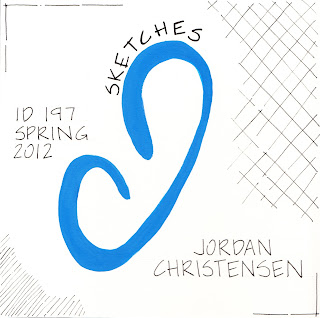I have compiled the ten sketches included in this post to create a sketchbook showing the progress of my drawing skills over the past few months.

Sketchbook Cover, 29 April 2012
Reflecting on My Progress, 29 April 2012
Over the past few months, my drawing skills have significantly improved. For example, the cross-hatching in my fifth sketch of the corner of a wall is much better than in my first sketch of a banana. In the banana drawing, the cross-hatching is very structured to the point that it looks unnatural. In the fifth drawing, however, my cross-hatching is much more relaxed and realistic. Since January, I have begun to understand how to utilize good shading techniques like cross-hatching and scribbling. I have also started to include good graphics in my drawings using methods such as professional gaps and hit-go-hit lines.

Sketchbook Cover, 29 April 2012
Reflecting on My Progress, 29 April 2012
Over the past few months, my drawing skills have significantly improved. For example, the cross-hatching in my fifth sketch of the corner of a wall is much better than in my first sketch of a banana. In the banana drawing, the cross-hatching is very structured to the point that it looks unnatural. In the fifth drawing, however, my cross-hatching is much more relaxed and realistic. Since January, I have begun to understand how to utilize good shading techniques like cross-hatching and scribbling. I have also started to include good graphics in my drawings using methods such as professional gaps and hit-go-hit lines.
Value Sketch, 18 April 2012
These two sketches are of the same room shown with different values with the same media. The first sketch uses various line weights and the second uses high contrast shading. I struggle with sketching rough drawings like this; it is hard for me to find a way of sketching that is somewhere between too structured and too sloppy. I think this sketch looks too sloppy, while ny sketch from April 10, for example, looks too structured.
 | |
|
 | |
|
 |
| Still Life Sketch Using Crosshatching, 17 January 2012 This was my first time using crosshatching techniques. It took me a fair amount of time to revise and perfect this sketch, but I think it turned out well for my first attempt at crosshatching. |













